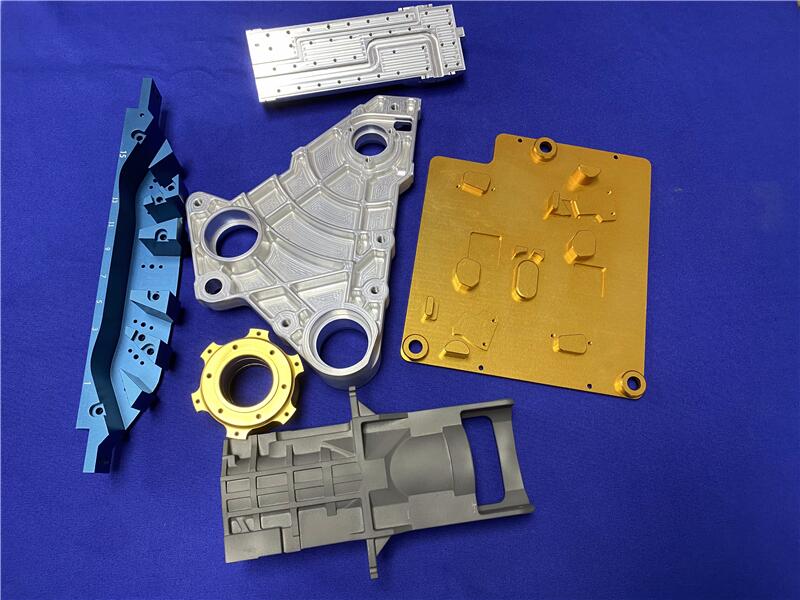Selecting the right type of material may be one of the most important selections you make for your CNC precision machining work. Brass and aluminum are both the most commonly used non-ferrous metals that often come up against each other. Both materials are well known for their machinability and are generally viewed as "go-to" materials for high-precision custom components.
In this article we will look at a comparison of brass vs aluminum machining on different mechanical properties, cost/efficiency, finishing, applications, etc. to help you decide on the right material for your CNC components.

Basic Material Overview
Property | Brass | Aluminum |
Composition | Copper-Zinc Alloy | Pure or alloyed Aluminum (e.g. 6061, 7075) |
Density | ~8.4 g/cm³ | ~2.7 g/cm³ |
Conductivity | Excellent (Electrical & Thermal) | Very good |
Cost | Medium to High | Generally Lower |
Recyclability | High | Very High |
Both brass and aluminum are lightweight, and non-magnetic, and are durable to corrosive qualities while comparing in different machining characteristics and initial-use purposes.
Machinability: Which One Cuts More Easily?
Brass Machining Brass should probably be considered machinist's best friend. Brass has short-chips, faster-feed rates, and less tool wear.
✔ Clean chip breaks
✔ No secondary operations needed for smooth finishes
✔ Lower tool pressure
✔ Less vibration = more stable cutting
Read more about Machining Brass on our Brass CNC Machining page.

Aluminum Machining Aluminum machines really well too (look for 6061 or 7075)
✔ Great cutting speeds
✔ Lightweight parts for aerospace, electronics
✔ Great anodizing options after machining
Lubricant needed for smoother finishes
Softer material = risk for burrs, deformation if clamped improperly.
Explore our full capabilities on our Aluminum CNC Machining page.
The Conclusion:
If your ultimate goal is to have the least possible tool wear, and have the quickest machining speed, brass is the way to go. If you are cutting parts lightweight and for structural applications, aluminum is better.
Strength, Hardness & Tolerance Holding
Attribute | Brass | Aluminum |
Tensile Strength | Higher (~400 MPa) | Moderate (~250 MPa for 6061) |
Hardness | Higher (Rockwell B75–B90) | Softer (Rockwell B50–B60) |
Tolerance Holding | Excellent | Good (requires care in thin sections) |
Brass also has way better dimensional stability when cutting under operationally machining conditions. This is especially important if creating tight tolerances within applications such as:
Fluid connectors
Electrical terminals
Optical retainers
Watch parts
Surface Finish & Post Processing
Normally brass is usually done with little or no finishing. There is already a good surface and looks good if just left bare or nickel plated.
Aluminum is much more cyclical and is surface anodize-able in any number of color variations, and surface textures, before it gets sealed meaning you have to use multiple processes to protect it.
Cost Next let's think about costs.
The cost for aluminum is generally cheaper per kg and easier to source from larger sheet, bar or billet sizes.
However, brass has less total machining time, has decidedly lower tool wear, and therefore are together much lower costs all together. Brass also has a good scrap value and because of how much actual key components only account for, there is very little waste.
So, although brass is more material cost than aluminum, it can be a better deal for lower volume, high precision components (think low volume production runs ) than you think!
Typical Applications: Brass vs Aluminum
Industry | Brass CNC Parts | Aluminum CNC Parts |
Electronics | Terminals, pins, connectors | Housings, enclosures |
Medical | Fluid control valves | Lightweight sensor mounts |
Aerospace | Bushings, fasteners | Structural brackets |
Optics | Lens retainers, rings | Camera frames |
Automotive | Fuel nozzles, sensor sleeves | Intake parts, clamps |
✔ Use brass for parts that will have electrical contact, are tight tolerance, or require a polished finish.
✔ Use aluminum for lightweight good strength structural parts, or permitted you stick to a budget.
Summary Table: Brass vs Aluminum Machining at a Glance
Factor | Winner |
Machinability | Brass |
Lightweight | Aluminum |
Strength & Hardness | Brass |
Finishing Flexibility | Aluminum |
Cost Efficiency | Tie (depends on volume & tooling) |
Precision Parts | Brass |
Expert Tip:
When weighing the differences between using brass and aluminum materials for your CNC project, consider the whole pathway to production and not just the immediate material costs only, as well as tolerance requirements and the environmental conditions in use.
Still having trouble deciding? Our engineers at LJZ CNC will study your design, and help you sort out the proper cost-effective, high-performing solution!
For more information please feel free to contact us for a free consultation — or read more about our services in detail: